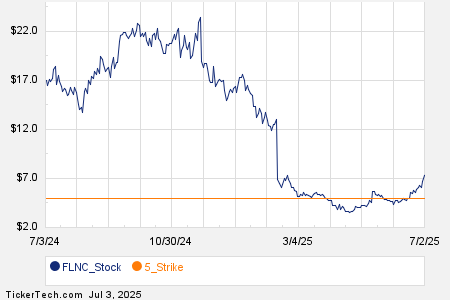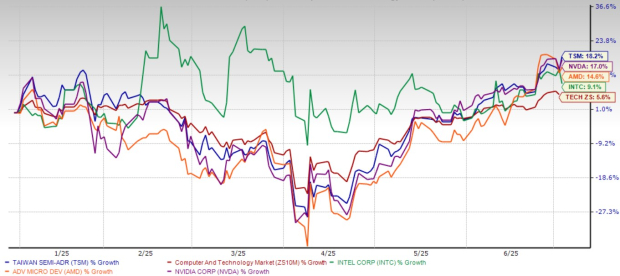Crude Oil Prices Rise Amid Geopolitical Tensions and Inventory Declines
May WTI crude oil (CLK25) Wednesday closed up +0.65 (+0.94%), and May RBOB gasoline (RBK25) rose by +0.0253 (+1.14%).
Market Highlights
On Wednesday, crude oil prices surged to three-week highs and ended moderately higher. The rally was partly fueled by President Trump’s announcement on Monday regarding a 25% secondary tariff on countries purchasing oil or gas from Venezuela, effective April 2. Additionally, an unexpected decline in weekly EIA crude inventories provided further momentum for prices. However, Wednesday’s rally in the dollar index (DXY00) to a three-week high, along with a drop in equity markets, limited the upward movement of crude prices.
Geopolitical Developments Impacting Prices
Bearish sentiments arise from the recent agreement for a partial ceasefire between Russia and Ukraine, which may pave the way for reduced US and European sanctions on Russian crude exports.
Support for crude oil persists, following sanctions imposed by the US Treasury Department’s Office of Foreign Assets Control against a China-based oil refinery and 19 entities linked to Iranian crude oil shipping. This action emphasizes the US’s efforts to diminish Iranian crude exports. Rystad Energy A/S estimates that a maximum-pressure campaign could eliminate up to 1.5 million barrels per day (bpd) of Iranian crude from the global market, a bullish aspect for prices.
Middle East Tensions and Their Effects
Regional tensions in the Middle East continue to bolster crude oil prices. Israel’s ongoing airstrikes in Gaza have coincided with the end of a nearly two-month ceasefire with Hamas, as Israeli Prime Minister Netanyahu promises to escalate military efforts. Furthermore, the US has initiated strikes against Yemen’s Houthi rebels, with Defense Secretary Hegseth stating that the strikes will be relentless until the group halts attacks on vessels in the Red Sea.
Production and Supply Chain Dynamics
In contrast, increased Russian oil exports exert negative pressure on crude prices. According to data from analytics firm Vortexa, Russian oil products exports in February hit a one-year high of 2.5 million bpd.
OPEC+ announced on March 3 that it would resume some halted crude output in April, adding 138,000 bpd to the global supply. This move marks the beginning of a series of monthly increases, aiming to reverse a two-year-long production cut, with a total of 2.2 million bpd to be restored over time. While initially set to conclude between January and late 2025, full restoration of the cut won’t now occur until September 2026. Notably, OPEC’s February crude production rose by +320,000 bpd to a 14-month high of 27.35 million bpd.
Sanctions and Supply Pressure
Amidst supportive factors for crude oil prices, the US imposed new sanctions on Russia’s oil industry on January 10, aiming to limit global oil supplies. These sanctions target Gazprom Neft and Surgutneftgas, which exported approximately 970,000 bpd of Russian crude in the first ten months of 2024. Consequently, Russian crude exports fell by 530,000 bpd week-on-week to 3.03 million bpd for the week ending March 23.
China’s Demand and Global Oil Inventory Trends
Weakening crude oil demand in China presents further bearish indicators for oil prices. Chinese customs data reveals that crude imports in 2024 decreased by 1.9% year-on-year to 553 million metric tons, with China retaining its status as the world’s largest crude importer.
Moreover, an increase in crude oil held on tankers—reported by Vortexa to have risen by 7.6% week-on-week to 67.43 million barrels as of the week ending March 21—also suggests bearish conditions for oil prices.
Weekly EIA Report Insights
Wednesday’s EIA report was mixed regarding crude and petroleum products. On a bullish note, EIA crude inventories unexpectedly fell by 3.34 million barrels, whereas analysts had predicted a build of 1.97 million barrels. Additionally, crude supplies at Cushing, the delivery point for WTI futures, decreased by 755,000 barrels. On the bearish side, EIA gasoline supplies dropped by 1.4 million barrels, which was a smaller draw than the expected 1.5 million barrels. Similarly, EIA distillate stockpiles declined by 421,000 barrels, again below the anticipated 1.0 million barrels.
According to the latest EIA report, US crude oil inventories as of March 21 were 5.3% below the seasonal five-year average. Gasoline inventories stood 2.3% above the seasonal five-year mark, while distillate inventories were 6.8% below the average. US crude oil production remained unchanged week-on-week at 13.574 million bpd, slightly shy of the record high of 13.631 million bpd recorded the week of December 6.
Furthermore, Baker Hughes reported last Friday that the number of active US oil rigs fell by one rig to 486 for the week ending March 21. This figure is slightly above the three-year low of 472 rigs noted on January 24, reflecting a downward trend from the four-and-a-half-year high of 627 rigs recorded in December 2022.
On the date of publication, Rich Asplund did not hold (either directly or indirectly) positions in any securities mentioned in this article. All information herein is for informational purposes only. For more details, please refer to the Barchart Disclosure Policy
here.
More news from Barchart
The views and opinions expressed herein are those of the author and do not necessarily reflect those of Nasdaq, Inc.




